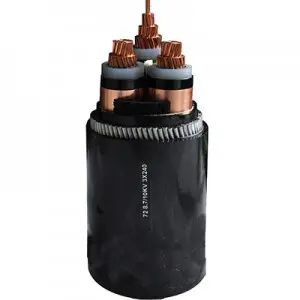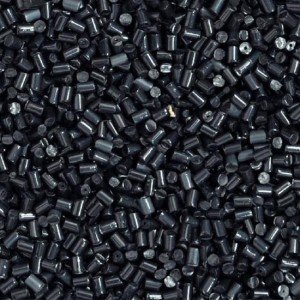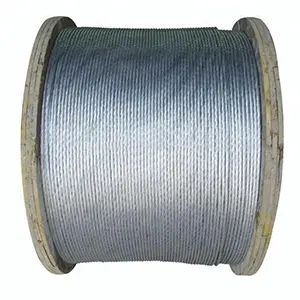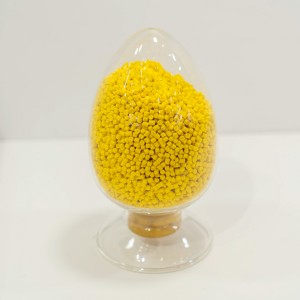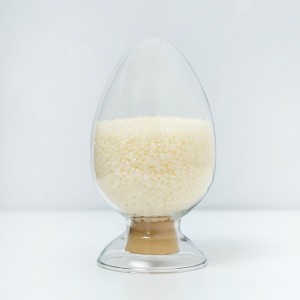
उत्पादनहरू
कपर टेप
उत्पादन परिचय
तामाको टेप उच्च विद्युतीय चालकता, मेकानिकल शक्ति र राम्रो प्रशोधन कार्यसम्पादन भएका केबलहरूमा प्रयोग हुने धेरै महत्त्वपूर्ण कच्चा पदार्थहरू मध्ये एक हो जुन र्यापिङ, अनुदैर्ध्य र्यापिङ, आर्गन आर्क वेल्डिङ र एम्बोसिङको लागि उपयुक्त छ। यसलाई मध्यम र कम-भोल्टेज पावर केबलहरूको धातुको ढाल तहको रूपमा प्रयोग गर्न सकिन्छ, सामान्य सञ्चालनको क्रममा क्यापेसिटिभ करेन्ट पास गर्छ, विद्युतीय क्षेत्रलाई पनि ढाल्छ। यसलाई नियन्त्रण केबलहरू, सञ्चार केबलहरू, आदिको ढाल तहको रूपमा प्रयोग गर्न सकिन्छ, विद्युत चुम्बकीय हस्तक्षेपको प्रतिरोध गर्न र विद्युत चुम्बकीय संकेत चुहावट रोक्न; यसलाई समाक्षीय केबलहरूको बाहिरी कन्डक्टरको रूपमा पनि प्रयोग गर्न सकिन्छ, वर्तमान प्रसारणको लागि च्यानलको रूपमा काम गर्न, र विद्युत चुम्बकीय ढाल्न।
एल्युमिनियम टेप/एल्युमिनियम मिश्र धातु टेपको तुलनामा, तामाको टेपमा उच्च चालकता र शिल्डिंग प्रदर्शन हुन्छ, र यो केबलहरूमा प्रयोग हुने एक आदर्श शिल्डिंग सामग्री हो।
विशेषताहरू
हामीले प्रदान गरेको तामाको टेपमा निम्न विशेषताहरू छन्:
१) सतह चिल्लो र सफा छ, कर्लिङ, दरार, पिलिङ्ग, बुर, आदि जस्ता दोषहरू बिना।
२) यसमा उत्कृष्ट मेकानिकल र विद्युतीय गुणहरू छन् जुन र्यापिङ, अनुदैर्ध्य र्यापिङ, आर्गन आर्क वेल्डिङ र एम्बोसिङको साथ प्रशोधनको लागि उपयुक्त छ।
आवेदन
तामाको टेप मध्यम र कम भोल्टेज पावर केबलहरू, नियन्त्रण केबलहरू, सञ्चार केबलहरू, र समाक्षीय केबलहरूको धातुको ढाल तह र बाहिरी कन्डक्टरको लागि उपयुक्त छ।
ढुवानी परिचय
हामी डेलिभरीको समयमा सामानहरू क्षतिग्रस्त नभएको सुनिश्चित गर्नेछौं। ढुवानी गर्नु अघि, हामी ग्राहकलाई कुनै समस्या नभएको र ढुवानीको समयमा सबै कुरा सुरक्षित छ भनी सुनिश्चित गर्न सामानहरू छोडिनेछन् भनी सुनिश्चित गर्न भिडियो निरीक्षण गर्ने व्यवस्था गर्नेछौं। हामी वास्तविक समयमा प्रक्रिया पनि ट्र्याक गर्नेछौं।
प्राविधिक प्यारामिटरहरू
| वस्तु | एकाइ | प्राविधिक प्यारामिटरहरू | |
| मोटाई | mm | ०.०६ मिमी | ०.१० मिमी |
| मोटाई सहनशीलता | mm | ±०.००५ | ±०.००५ |
| चौडाइ सहनशीलता | mm | ±०.३० | ±०.३० |
| परिचयपत्र/ओडी | mm | आवश्यकता अनुसार | |
| तन्य शक्ति | एमपीए | ≥१८० | >२०० |
| लम्बाइ | % | ≥१५ | ≥२८ |
| कठोरता | HV | ५०-६० | ५०-६० |
| विद्युतीय प्रतिरोधकता | Ω·मिमी²/मिटर | ≤०.०१७२४१ | ≤०.०१७२४१ |
| विद्युतीय चालकताity | % IACS | १०० भन्दा कम | १०० भन्दा कम |
| नोट: थप विवरणहरू, कृपया हाम्रो बिक्री कर्मचारीलाई सम्पर्क गर्नुहोस्। | |||
प्याकेजिङ
तामाको टेपको प्रत्येक तह सफासँग मिलाइएको छ, र बाहिर निकाल्न र ओसिलोपन रोक्नको लागि प्रत्येक तहको बीचमा बबल तह र डेसिकेन्ट हुन्छ, त्यसपछि ओसिलोपन-प्रुफ फिल्म झोलाको तह बेर्नुहोस् र काठको बक्समा राख्नुहोस्।
काठको बक्सको आकार: ९६ सेमी*९६ सेमी*७८ सेमी।
भण्डारण
(१) उत्पादन सफा, सुख्खा र हावा चल्ने गोदाममा राख्नुपर्छ। गोदाम हावा चल्ने र चिसो हुनुपर्छ, प्रत्यक्ष घाम, उच्च तापक्रम, अत्यधिक आर्द्रता आदिबाट बच्न, उत्पादनहरू सुन्निने, अक्सिडेशन र अन्य समस्याहरूबाट बच्न।
(२) उत्पादनलाई सक्रिय रासायनिक उत्पादनहरू जस्तै एसिड र क्षार र उच्च आर्द्रता भएका वस्तुहरूसँग भण्डारण गर्नु हुँदैन।
(३) उत्पादन भण्डारणको लागि कोठाको तापक्रम (१६-३५) ℃ हुनुपर्छ, र सापेक्षिक आर्द्रता ७०% भन्दा कम हुनुपर्छ।
(४) भण्डारण अवधिमा उत्पादन अचानक कम तापक्रम भएको क्षेत्रबाट उच्च तापक्रम भएको क्षेत्रमा परिवर्तन हुन्छ। प्याकेज तुरुन्तै नखोल्नुहोस्, तर निश्चित समयको लागि सुख्खा ठाउँमा भण्डार गर्नुहोस्। उत्पादनको तापक्रम बढेपछि, उत्पादनलाई अक्सिडाइज हुनबाट रोक्न प्याकेज खोल्नुहोस्।
(५) ओसिलोपन र प्रदूषणबाट बच्न उत्पादन पूर्ण रूपमा प्याक गर्नुपर्छ।
(६) भण्डारणको समयमा उत्पादनलाई भारी चाप र अन्य यान्त्रिक क्षतिबाट सुरक्षित राखिनेछ।
प्रतिक्रिया



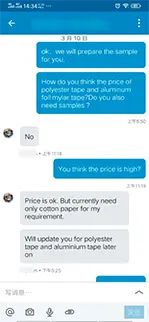
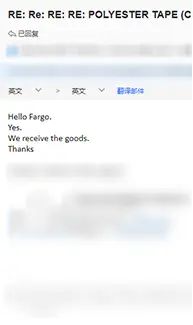
नि:शुल्क नमुना सर्तहरू
वान वर्ल्ड ग्राहकहरूलाई औद्योगिक उच्च-गुणस्तरको तार र केबल सामग्री र प्रथम-स्तरीय प्राविधिक सेवाहरू प्रदान गर्न प्रतिबद्ध छ।
तपाईंले रुचि राख्नुभएको उत्पादनको नि:शुल्क नमूना अनुरोध गर्न सक्नुहुन्छ जसको अर्थ तपाईं हाम्रो उत्पादन उत्पादनको लागि प्रयोग गर्न इच्छुक हुनुहुन्छ।
हामी तपाईंले प्रतिक्रिया दिन चाहनुभएको प्रयोगात्मक डेटा मात्र प्रयोग गर्छौं र उत्पादन विशेषताहरू र गुणस्तरको प्रमाणीकरणको रूपमा साझा गर्छौं, र त्यसपछि ग्राहकहरूको विश्वास र खरिद मनसाय सुधार गर्न थप पूर्ण गुणस्तर नियन्त्रण प्रणाली स्थापना गर्न हामीलाई मद्दत गर्छौं, त्यसैले कृपया आश्वस्त हुनुहोस्।
तपाईंले नि:शुल्क नमूना अनुरोध गर्न दायाँ तिर फारम भर्न सक्नुहुन्छ।
आवेदन निर्देशनहरू
१. अन्तर्राष्ट्रिय एक्सप्रेस डेलिभरी खाता भएको ग्राहकले स्वेच्छाले भाडा तिर्छ (माल अर्डरमा फिर्ता गर्न सकिन्छ)
२. एउटै संस्थाले एउटै उत्पादनको एउटा मात्र नि:शुल्क नमूनाको लागि आवेदन दिन सक्छ, र एउटै संस्थाले एक वर्ष भित्र पाँचवटासम्म फरक-फरक उत्पादनका नमुनाहरू नि:शुल्क आवेदन दिन सक्छ।
३. नमूना केवल तार र केबल कारखानाका ग्राहकहरूको लागि हो, र उत्पादन परीक्षण वा अनुसन्धानको लागि प्रयोगशाला कर्मचारीहरूको लागि मात्र हो।
नमुना प्याकेजिङ
नि:शुल्क नमुना अनुरोध फारम
कृपया आवश्यक नमूना निर्दिष्टीकरणहरू प्रविष्ट गर्नुहोस्, वा परियोजना आवश्यकताहरू संक्षिप्तमा वर्णन गर्नुहोस्, हामी तपाईंको लागि नमूनाहरू सिफारिस गर्नेछौं।
फारम बुझाएपछि, तपाईंले भर्नुभएको जानकारी उत्पादन विशिष्टता र ठेगाना जानकारी निर्धारण गर्न थप प्रशोधनको लागि ONE WORLD पृष्ठभूमिमा पठाइनेछ। र तपाईंलाई टेलिफोनबाट पनि सम्पर्क गर्न सकिन्छ। कृपया हाम्रो पढ्नुहोस्गोपनीयता नीतिथप विवरणहरूको लागि।



